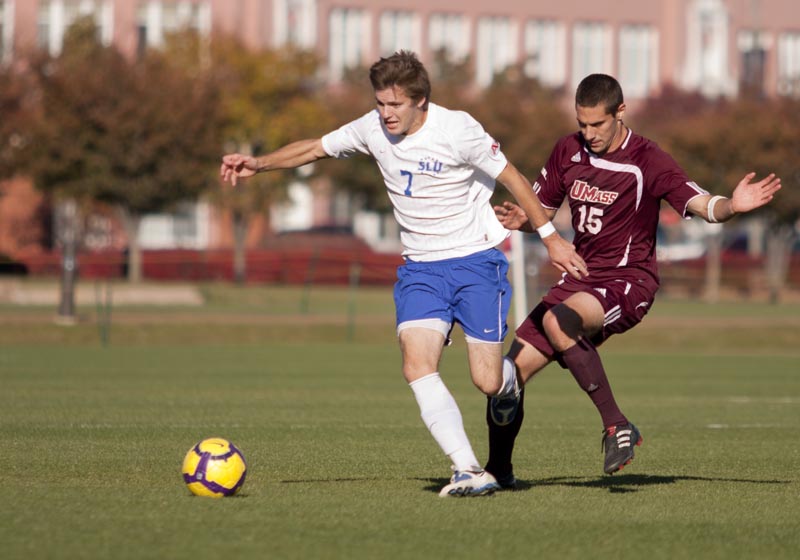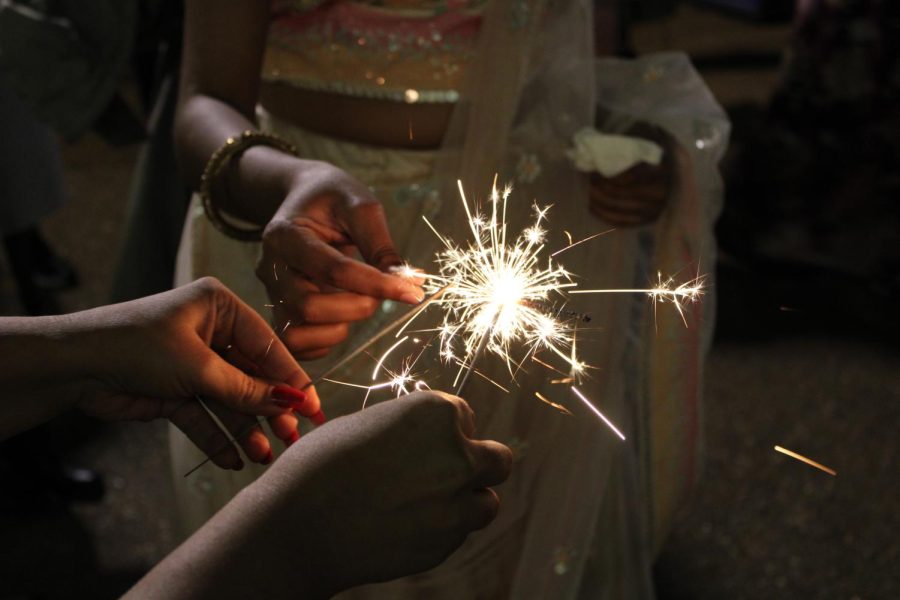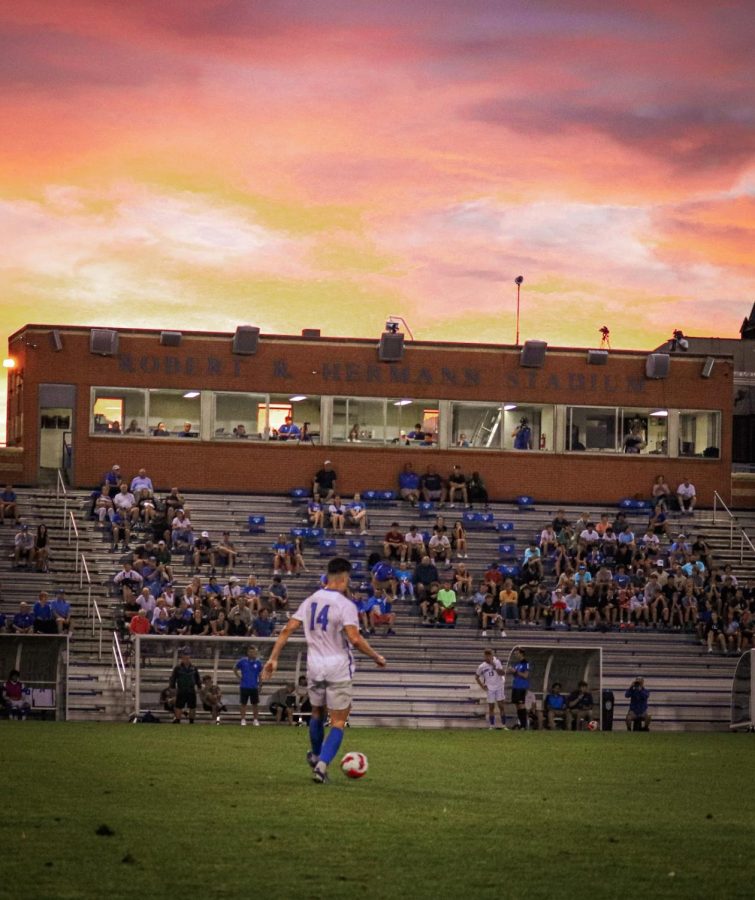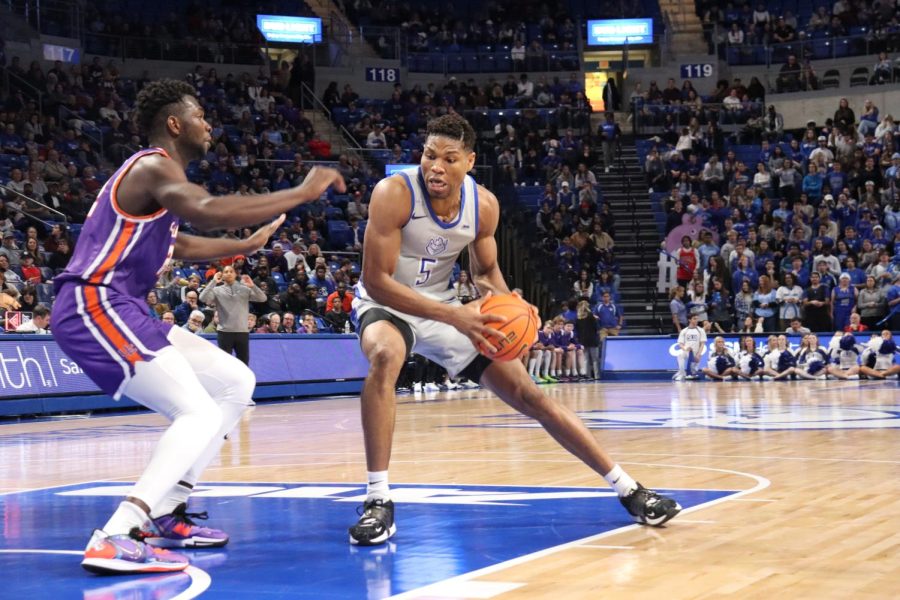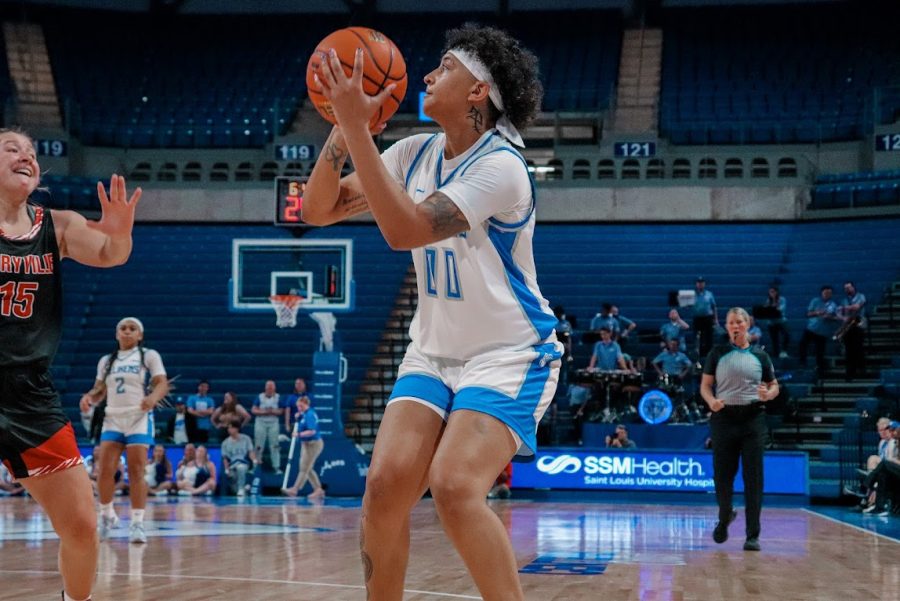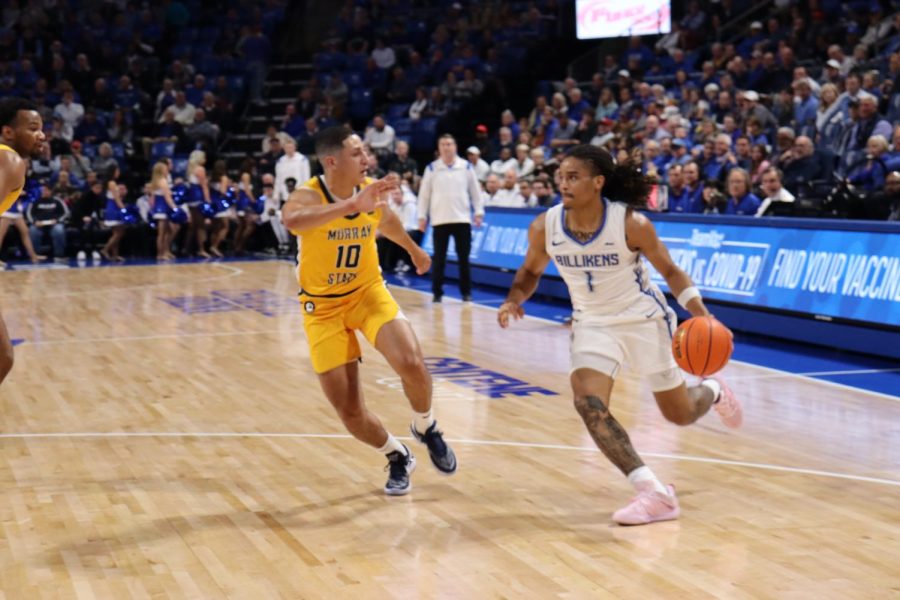A tradition. That is what players on the Saint Louis University men’s soccer team embody when they put on their jerseys that are adorned with 10 small stars circling the SLU logo. These stars are not just decoration—they each represent a national championship for the SLU men’s soccer program.
“Everybody involved in college soccer knows about the history of SLU,” former Billiken and current New York Red Bulls (Major League Soccer) player Tim Ream said. “To be able to put on the SLU uniform with 10 stars on it and know that you could be a part of that eleventh star, that eleventh national championship, that’s something special. No other program has that—being able to be a part of that history.”
The history that Ream speaks of dates back to 1959, the first year that included a season of NCAA men’s soccer. The first ever NCAA men’s soccer national championship game was played on Nov. 28, 1959 in Storrs, Conn. between SLU and the University of Bridgeport.
In that initial season, SLU head coach Bob Guelker led a team that had a budget of $200 and a roster comprised of only St. Louis-area players. In the semifinal against City College of New York, the all-St. Louis roster prevailed against a squad that had 14 foreign-born players.
SLU won the 1959 national championship against Bridgeport 5-2, the first of 10 Billiken men’s soccer national championships in a span of 15 years.
Although SLU has not won a men’s soccer championship since 1973, the Billikens’ 10 national titles represent the most in NCAA history. Second on the all-time list is the University of Indiana, with seven national championships to their credit. These men’s soccer national championships represent the only NCAA championships achieved by SLU.
Several current players on the squad understand the legacy they represent each time they step onto the field. Junior Mike Roach said, “I wanted to personally come [to a place] where soccer was one of the bigger sports at the school. With no football, basketball and soccer are the two biggest sports, and with SLU having so many national championships, soccer is huge.”
Current head coach Mike McGinty represents only the sixth head coach in the history of the men’s soccer program at SLU. The five coaches who preceded him averaged 10 years at the helm of the program.
“The school has done a great job sticking by their coaches,” McGinty said. “The coaches have a long tradition of excellence in continuity. To do anything at a high level for a long time takes stability—if you change coaches, if you change staffs all the time, then you lose some of that continuity and long-term planning. Giving coaches long-term stability helps them do better.”
The two first coaches at SLU, Bob Guelker and Harry Keough, are each responsible for leading SLU to five national championships. Guelker led the Billikens from 1959-1966 and Keough from 1967-1982. Guelker continued his coaching career long after he left SLU, even coaching the United States Men’s National Team at the 1972 Summer Olympic Games.
“We have an enormous sense of pride and respect for the guys that were here before us,” McGinty said. “We embrace it; we go about our business every day trying to honor and pay homage and respect to those that came before us. We understand that the program itself is bigger than any one of us. The backs of the jerseys change every year, but the ‘SLU’ on the front of the jersey stays. We do everything we can to create some of our own history and some of our own memories.”
“You just respect (the jersey) every time you go out and play, knowing all the players that have gone out before you,” junior Beau Bellomy, a current member of the team, said. “It means a lot knowing that I wear the same jersey as all the guys who won all those national championships and guys like Brian McBride who have done so well for the University and have played on national teams and in the MLS.”
McGinty also says that he stresses the past success of SLU soccer to all of his potential recruits, although he does not know how important that is to a potential player.
“Our history is something that we talk about all the time,” McGinty said.
“We definitely talk about it with recruits. But at the end of the day, families are looking at the value of education and how much is coming out of their pocket. Some of those things trump the soccer program, but we talk about our history every chance we get.”
Ream certainly considered the championship tradition at SLU when he signed his letter of intent to play at SLU in 2005.
“The history is what keeps players coming in,” Ream said. “It’s something bigger than yourself; it’s bigger than the team you’re on. That’s something that no other college will ever be able to duplicate.”
The legacy was also special to Roach, who grew up in close proximity to Billiken soccer. “I’m from Saint Louis, so I’ve always known about SLU soccer. I would go down to games, and one day I thought it would be awesome to play for the school, and I’m honored to have that opportunity right now.”
McGinty himself was drawn to SLU in part because of the winning tradition of the men’s soccer program.
“For me, it was an exciting and positive aspect of the job. It was probably a bigger deal in recruiting me than for some of the 17-year-old boys that I was recruiting,” McGinty said.
Unlike the 1959 team, the current SLU men’s soccer squad features players from all over the Western Hemisphere. The players come from three countries and seven states. Still, 10 players on the current men’s soccer roster hail from the metropolitan St. Louis area. Although much has changed in the landscape of NCAA soccer since 1959, a core of St. Louis-area talent still provides the nucleus of the SLU men’s soccer team.
Tonight, Nov. 11, at 7 p.m. the Billikens will face St. Bonaventure in the first round of the Atlantic 10 Conference Tournament in Charlotte. In all likelihood, SLU needs to win the A-10 Conference Tournament in order to qualify for the NCAA tournament—it will take three victories in four days to achieve that goal.
No matter the odds, when the players and the coaches step onto the field, with the 10 championship stars on their chest, the tradition enters the field with them.




